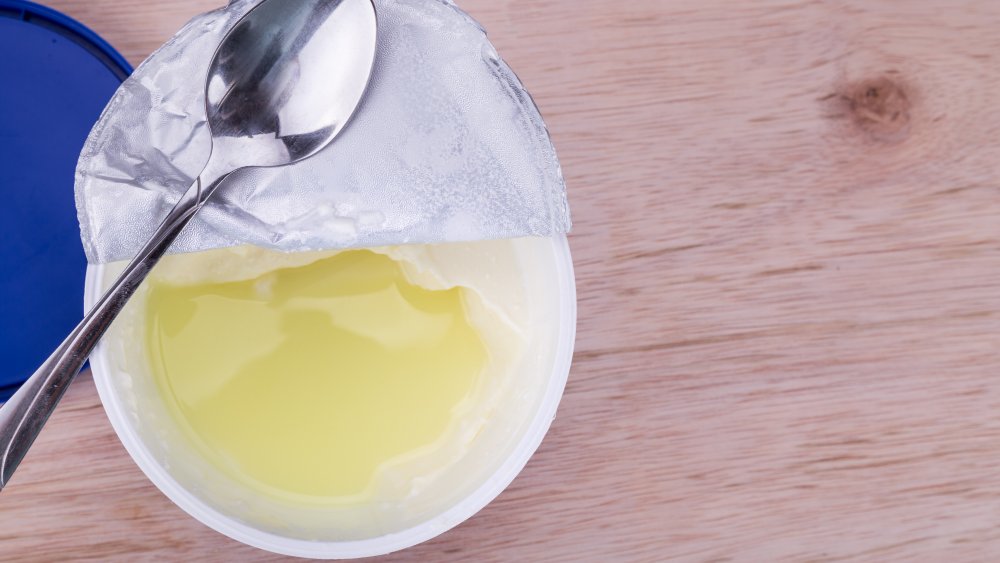Is It Safe To Eat Separated Yogurt?
Pretty much anyone who's snapped off a yogurt lid has seen the phenomenon: a puddle of translucent liquid that has risen to the top over the creamy curds below. Though innocuous enough to many, some have shuddered at the sight, even taking to Twitter to voice their unease — and to ask what the heck it is (via Today).
But, as Spoon University explains, that substance is a natural component of yogurt and an especially common feature in "strained yogurt styles," like Greek and Icelandic varieties (hence the absorbent paper topping you might find under the lids of some brands). And, in most cases, it's perfectly safe — in fact, recommended — to stir the liquid back into your yogurt and spoon away.
This substance, called whey, is a dairy-product protein that offers its own stores of nutritional goodies, so if you're pouring it off, you may be missing out. PopSugar notes that whey provides some protein, potassium, and calcium — and if you still can't stand the sight of it, simply shake up the container before opening to premix the components within.
Why does yogurt separate?
According to Cosmopolitan, whey is the liquid left behind after milk has been strained and curdled, and it adds creamy texture in addition to nutrition. But through transport and the resulting possible changes in temperature, that liquid can separate from its surroundings and rise to the top.
Today adds that, during the process of yogurt making, milk is cultured, during which the whey is suspended within the milk's cell walls. But those walls can break through movement (such as traveling from the manufacturer to the grocery store, or when consumers stick in a spoon), causing the liquid's release.
Yes, separated yogurt is generally safe to eat — yogurt can even remain perfectly edible two or three weeks after the date stamped on the container, though the amount of separated whey will increase with age (via Spoon University). However, there is a limit to keep in mind: Business Insider warns that if the liquid pooling at the top is "more than usual," or, of course, if there are signs of curdling or mold, it's best to toss.

